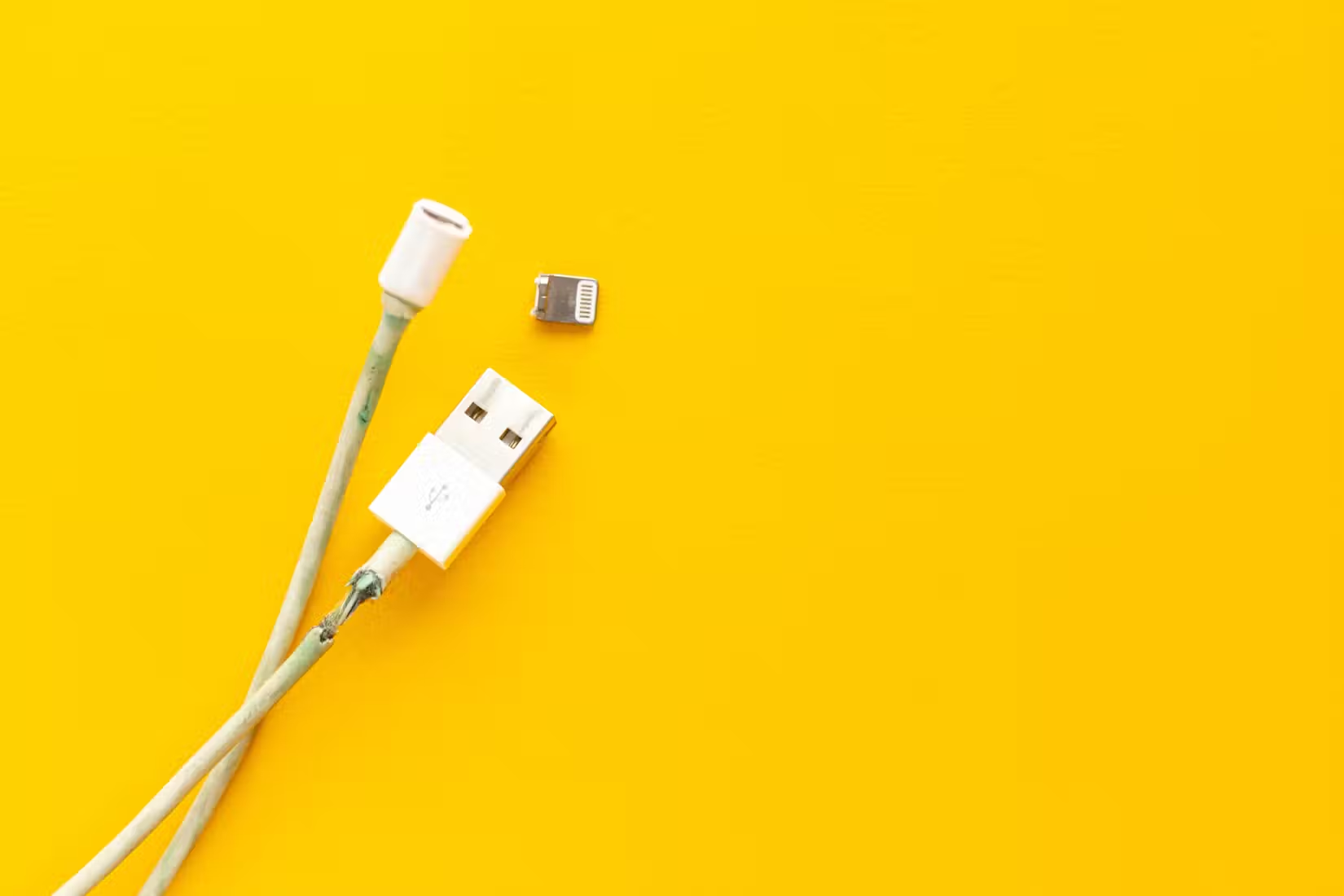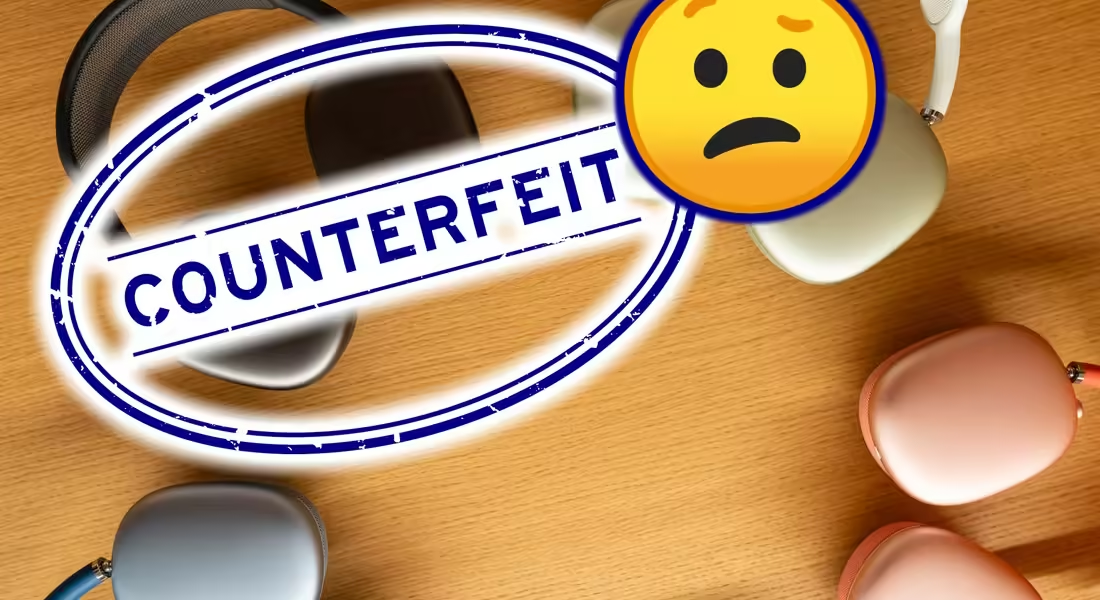Don’t Be Fooled! The Most Commonly Faked Tech Products That Could Be in Your Cart
In the world of technology, innovation is constant, and new gadgets and accessories are launched regularly, catering to our ever-evolving digital needs. However, as the demand for tech products increases, so does the prevalence of counterfeit versions flooding the market. The rise of e-commerce and online shopping platforms has made it easier for counterfeiters to distribute fake products, often at enticingly low prices. While the allure of a bargain can be tempting, these fake tech products not only underperform but can also pose serious risks to your devices, your safety, and your data security.
Counterfeit tech products might look genuine on the surface, with packaging and design closely mimicking the real deal. However, upon closer inspection—or worse, once you start using them—you’ll likely discover the inferior materials, poor craftsmanship, and potential hazards that come with these fakes. In this article, we’ll dive into some of the most commonly faked tech products, helping you spot the red flags and avoid being deceived by counterfeit items. Here are the top tech products that are frequently faked and could be hiding in your shopping cart.
1. Phone Chargers

Perhaps one of the most commonly faked tech products is the phone charger. Whether for iPhones, Android devices, or other smartphones, counterfeit phone chargers are rampant in the market. They often look nearly identical to genuine ones, but upon use, their flaws quickly become apparent. The biggest issue with fake chargers is their substandard build quality, which can result in a wide range of problems, from slow charging to overheating, and even the risk of electrical fires.
Many counterfeit phone chargers are made with cheaper materials that don’t meet the necessary safety standards. They may lack proper insulation, leading to short circuits that can damage your phone or even cause harm to the user. Furthermore, they can deliver inconsistent power, which can degrade your phone’s battery over time or fail to charge the device at all.
To avoid counterfeit phone chargers, always buy from trusted retailers or directly from the manufacturer. Be wary of third-party sellers on online marketplaces offering chargers at significantly lower prices—if a deal seems too good to be true, it probably is. Look for genuine product certifications, such as UL (Underwriters Laboratories) marks, which indicate that the charger has passed safety tests.
2. Headphones

High-end headphones from brands like Apple, Bose, Sony, and Beats are popular targets for counterfeiters because they command premium prices. Knockoff versions of these headphones are sold at a fraction of the price, and they often look convincing enough to fool unsuspecting buyers. However, the differences in performance and durability are stark.
Counterfeit headphones tend to offer poor sound quality, with muffled bass, distorted treble, and overall inferior audio performance. The materials used in fake headphones are also cheaper, leading to discomfort during prolonged use, and they may break or stop working after a short period of time. In addition to the disappointing audio experience, counterfeit headphones might not include essential features like active noise cancellation, Bluetooth connectivity, or in-line controls—even though they are marketed as having these capabilities.
To avoid purchasing fake headphones, be cautious of heavily discounted prices, especially from third-party sellers. Always buy from authorized retailers, and inspect the packaging carefully. Genuine headphones will often come with high-quality packaging, while counterfeits may have spelling errors, inconsistent fonts, or low-quality materials. Check for serial numbers or authentication labels that you can verify with the manufacturer.
3. Power Banks

Power banks have become an essential accessory for keeping our devices charged on the go, but they’re also commonly faked. A fake power bank may look nearly identical to a genuine one, but it likely contains inferior internal components, which can lead to a range of issues, from poor performance to safety hazards.
One of the most common issues with counterfeit power banks is their actual capacity. While they may be labeled as having high capacities—such as 10,000mAh or 20,000mAh—in reality, they often hold a fraction of that. This means they won’t charge your device as many times as advertised, if at all. Worse still, fake power banks are often made with substandard batteries that can overheat, swell, or even explode under normal use.
Authentic power banks undergo rigorous testing to ensure safety, but counterfeit versions may not include important safety features, such as overcharge protection or temperature regulation. This puts both your devices and yourself at risk. To avoid being scammed, always buy power banks from reputable brands and sellers, and read customer reviews to ensure you’re getting a legitimate product. Also, look for certification marks from safety organizations.
4. USBs and External Hard Drives
Another tech product that’s frequently faked is the humble USB drive, as well as external hard drives. Counterfeit USBs and hard drives are designed to resemble popular brands and may even display the correct storage size on your computer when you plug them in. However, these storage devices often have significantly less space than advertised, and they may fail to store or retrieve your data reliably.
Counterfeit USB drives and external hard drives may be modified to trick your computer into recognizing more storage than they actually possess. For example, a fake 128GB USB might only have 4GB of actual storage. When you try to transfer data, the drive will quickly become corrupt or unusable, leading to data loss. These fake devices often use cheaper, unreliable memory chips that can fail unexpectedly.
In addition to being unreliable, fake USB drives and external hard drives pose security risks. They may come pre-installed with malware or viruses designed to steal your personal data or compromise your device. To avoid these fakes, purchase from trusted sources, check for customer reviews, and consider running a storage test using tools that can verify the actual capacity of the device before relying on it for important data storage.
5. Charging Stations
With more devices in our homes than ever before, charging stations have become popular for charging multiple devices at once. Unfortunately, these products are also frequently counterfeited. Fake charging stations might look sleek and high-tech, but their poor-quality components and lack of safety features make them dangerous to use.
Counterfeit charging stations may not provide the correct amount of power to your devices, which can result in slow charging times or damage to your device’s battery. More alarmingly, some fake charging stations can cause electrical surges or overheating, leading to potential fires. In addition to these risks, counterfeit charging stations may not include necessary protections against short circuits or overcharging, further endangering your devices.
When buying a charging station, look for brands that have a strong reputation for quality, and avoid unknown or generic brands that offer suspiciously low prices. Additionally, check for customer reviews and ratings to ensure that the charging station you’re considering is both safe and effective.
6. Smartwatches
Smartwatches from well-known brands like Apple, Samsung, and Garmin are among the most commonly faked tech products. Counterfeit smartwatches are often sold at a fraction of the price of genuine ones, but their functionality, quality, and reliability are far from the real deal. These knockoffs often mimic the design of high-end smartwatches but are made with cheaper materials, and their software is rudimentary at best.
Fake smartwatches typically offer very limited functionality compared to their legitimate counterparts. While they may claim to track fitness, monitor heart rate, or sync with your phone, the sensors and software used in counterfeit models are usually substandard. This leads to inaccurate data and a poor user experience. Additionally, these fake watches may not be compatible with apps or services offered by the real brand.
Another concern with counterfeit smartwatches is data security. These devices often run on insecure software, which could leave your personal information vulnerable to hackers or data breaches. To avoid buying a counterfeit smartwatch, stick to authorized retailers, and be cautious of offers that seem too good to be true. Always verify the watch’s serial number with the manufacturer if possible.
7. All-in-One Travel Adapters
Travel adapters are essential for globetrotters, allowing them to charge their devices in different countries with varying electrical outlets. However, all-in-one travel adapters are frequently counterfeited, and using a fake one can result in serious safety issues. Counterfeit travel adapters are often made with poor-quality materials and lack proper electrical insulation, which can lead to short circuits, sparks, or even electrical fires.
Fake travel adapters may also fail to convert voltage correctly, putting your devices at risk of being damaged. For example, plugging a device into a high-voltage outlet with a fake adapter can result in the device being fried. Additionally, counterfeit travel adapters may not fit securely into outlets, leading to loose connections that can further compromise safety.
To avoid the risks associated with counterfeit travel adapters, it’s important to buy from reputable brands that specialize in travel accessories. Look for certifications from electrical safety organizations and avoid adapters that are sold at suspiciously low prices.
8. Games Console Controllers

If you’re a gamer, you know how important a high-quality controller is for an immersive gaming experience. Unfortunately, gaming controllers are frequently faked, especially for popular consoles like PlayStation, Xbox, and Nintendo Switch. Counterfeit controllers may look like the real deal, but they often have poor build quality, resulting in buttons that stick, unresponsive controls, and an overall frustrating gaming experience.
In addition to poor performance, fake controllers may not last long before breaking or malfunctioning. They often lack the advanced features found in genuine controllers, such as motion sensors, haptic feedback, or wireless connectivity. In some cases, counterfeit controllers might not be compatible with your console at all, leaving you with a useless product.
To avoid buying a fake controller, always purchase from authorized retailers or directly from the console manufacturer. Inspect the packaging carefully, and be cautious of controllers sold at.
significantly lower prices than the official versions. Counterfeit controllers are often sold online through third-party sellers who do not offer guarantees or warranties, leaving you with little recourse if the product is defective.
To check if your gaming controller is authentic, look for certification marks, holograms, or serial numbers that can be verified with the manufacturer. Genuine controllers are built to last and deliver an optimal gaming experience, whereas fakes will quickly show their limitations. If you’re serious about your gaming, investing in a genuine, high-quality controller will save you money and frustration in the long run.
9. Spare Batteries
Spare batteries, particularly for smartphones, laptops, and cameras, are another frequently counterfeited tech product. A fake battery may look identical to the original, but its performance and safety are often compromised. Counterfeit batteries are typically made with low-quality materials that degrade quickly, leading to shorter battery life and the need for frequent recharges. Worse, these batteries can overheat, swell, or even explode, posing a risk to both your device and your safety.
Fake batteries often lack important safety features like overcharge protection or temperature control, making them dangerous to use. Additionally, counterfeit batteries may not hold a charge as long as genuine ones, meaning your device won’t last as long between charges. Using a fake battery can also void your device’s warranty, leaving you without support if the battery causes damage.
To avoid counterfeit batteries, always buy from the manufacturer or an authorized dealer. Look for official branding, certification marks, and packaging that matches the quality of the original. Be cautious of heavily discounted prices and sellers who cannot verify the authenticity of their products.
Conclusion
Counterfeit tech products are not just a waste of money—they can also pose serious risks to your devices, data, and personal safety. From phone chargers to smartwatches, counterfeit versions of popular tech products are widely available and often difficult to spot. The consequences of using fake products range from poor performance and device damage to data theft and potential harm to yourself.
To protect yourself from counterfeit tech products, always buy from reputable retailers and manufacturers, carefully inspect packaging and labels, and be skeptical of deals that seem too good to be true. With a little vigilance, you can avoid falling victim to counterfeit tech products and ensure that you’re getting safe, reliable products that deliver the performance you expect.
By recognizing these commonly faked tech products and taking steps to avoid them, you’ll save yourself time, money, and frustration in the long run. Don’t be fooled—invest in authentic tech products for a better, safer experience.




